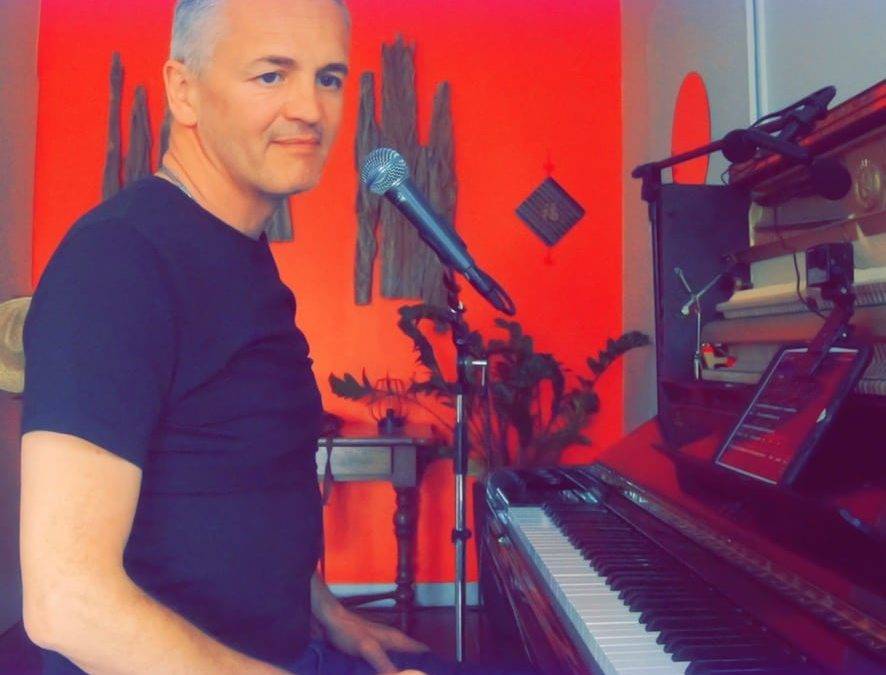La Vie En Rose
a classic by Édith Piaf, written in 1945.
Arranged, performed piano and solo singing, produced, filmed and edited
by David Bonnin at home.
April 11, 2020
I’ve re-harmonised the couplet with harmonic reverse movements.
The chorus is harmonized on a pedal.
In addition, I adapted the lyrics by replacing the “he” in “she” since I am a man, it’s still better.
I sing in head voice with a lot of breath, which gives me vulnerability and therefore a more important emotion to this song “La vie en rose” which is a monument of romanticism.
La Vie en rose (written in)
is a song by Édith Piaf, on a music by Louiguy, Édith Piaf being author Sacem, but not composer. It was probably Robert Chauvigny who finalized the music; and when Édith proposed to Marguerite Monnot to sign, she refused «this nonsense».
It is finally Louiguy who accepts the authorship of the music. It is broadcast before being recorded.
“La Vie en Rose” is one of the most famous French songs in the world, a standard taken up by many of the greatest international artists.
It is one of her friends, Marianne Michel, who asks Edith Piaf in 1945 on the terrace to write a piece of coffee and inspires her the first notes and the first words written on a piece of paper.
It is one of her friends, Marianne Michel, who asks Edith Piaf in 1945 on the terrace to write a piece of coffee and inspires her the first notes and the first words written on a piece of paper.
On this date, Piaf maintains a relationship with Yves Montand and offers him the original of this draft, the very first version of the song (still containing words from the spoken language and spelling mistakes):
“Mais s’il me prends [sic] dans ses bras
Qu’il me parle tout bas
Moi j’vois des trucs en rose
Il me dit des mots d’amour
Des mots de tous les jours
Mais ça m’fait quelques [sic] chose“
Marianne Michel replaces «tricks» with «life». Henri Contet suggests to him to work on the cause and the transforming effect «But if he takes me [sic] in his arms/…/Me I see things in pink» in «When he takes me in his arms/…/I see life in pink».
The definitive text of “La Vie en Rose”
is given to him by his favourite author, Henri Contet, on his birthday. She ignored this song for several months, then gave it to Marianne Michel who popularized it in the Parisian music halls, before Piaf recorded it on October 9, 19462.
On June 26, 1950, Louis Armstrong recorded C’ est si bon and La Vie en rose in New York with Sy Oliver’s orchestra. The English lyrics are written by Mack David. It is under this title that the adaptation of the film La Môme was released in many countries (including Canada).
It is therefore the composer and pianist Louiguy (Louis Guglielmi) who put to music these verses which, with a new title, became a worldwide success and the song of romantic love par excellence.
Lyrics of “La vie en rose” :
verse 1
Des yeux qui font baisser les miens
Un rire qui se perd sur sa bouche
Voilà le portrait sans retouche
De l’homme auquel j’appartiens
chorus 1
Quand il me prend dans ses bras
Qu’il me parle tout bas
Je vois la vie en rose
Il me dit des mots d’amour
Des mots de tous les jours
Et ça m’fait quelque chose
Il est entré dans mon cœur
Une part de bonheur
Dont je connais la cause
C’est lui pour moi
Moi pour lui
Dans la vie
Il me l’a dit
L’a juré, pour la vie
Et dès que je l’aperçois
Alors je sens en moi
Mon cœur qui bat
verse 2
Des nuits d’amour à plus finir
Un grand bonheur, qui prend sa place
Des ennuis des chagrins s’effacent
Heureux, heureux, à en mourir
chorus 2
Quand il me prend dans ses bras
Qu’il me parle tout bas
Je vois la vie en rose
Il me dit des mots d’amour
Des mots de tous les jours
Et ça m’fait quelque chose
Il est entré dans mon cœur
Une part de bonheur
Dont je connais la cause
C’est toi pour moi
Moi pour toi
Dans la vie
Il me l’a dit
M’a juré pour la vie
Et, dès que je t’aperçois
Alors je sens en moi
Mon cœur qui bat
Lalalalalala
Lalalalalala

